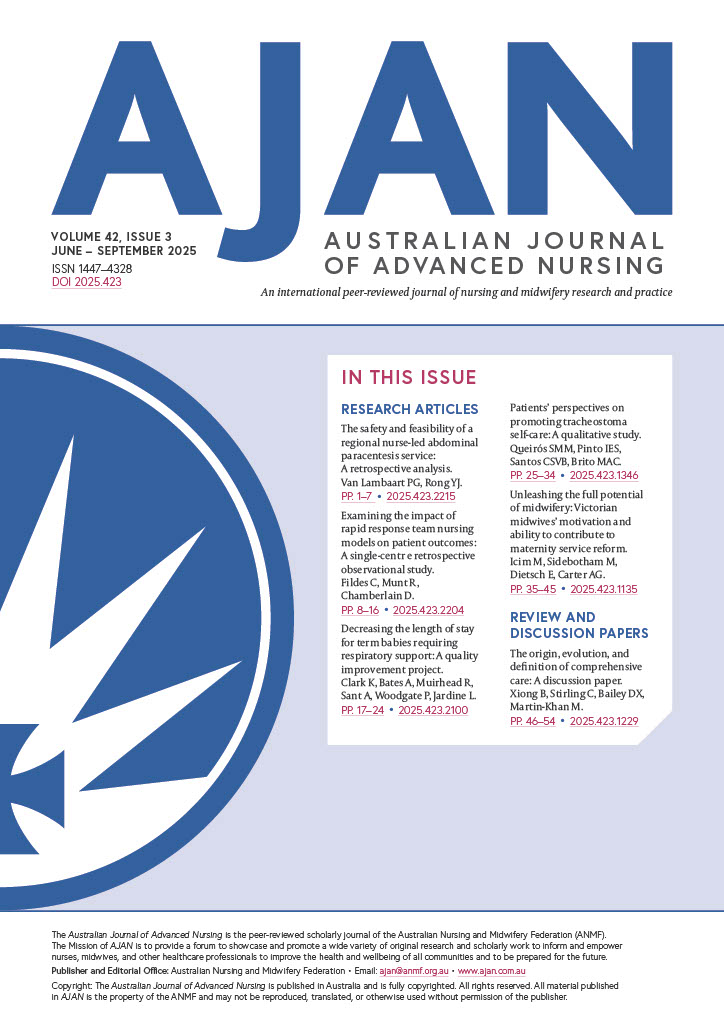The safety and feasibility of a regional nurse-led abdominal paracentesis service: a retrospective analysis
Main Article Content
Keywords
Alcoholic liver diseases, alcoholic liver cirrhosis, ascites, abdominal paracentesis
Abstract
Background: Recurrent ascites is a common complication of liver decompensation that often requires repeated abdominal paracentesis for symptom management. This study was to retrospectively analyse the safety and feasibility of a nurse-led abdominal paracentesis clinic at a regional health service ambulatory care unit.
Methods: The Advanced Practice Nurse (APN) identified to lead this service had ten years of post-graduate nursing experience, six of which included specialised hepatology training in a role as a Hepatology Clinical Nurse Consultant. She was enrolled for further study as a Nurse Practitioner. The APN observed ten paracentesis procedures by a Radiologist. She was then supervised for five paracentesis procedures, before attempting the procedure independently. A retrospective analysis was conducted to assess the safety and feasibility of this service.
Results: From July 27, 2022, to March 22, 2023, 59 abdominal paracentesis procedures were performed by an APN. The overall success rate was 97%. The average amount of ascitic fluid removed was 7.57 litres. The average time of the procedure within the ambulatory care unit from admission to discharge was 5.75 hours. There were no episodes of abdominal wall haematoma, hemoperitoneum, intraperitoneal haemorrhage, infection, spontaneous bacterial peritonitis or death post-paracentesis. There was 1 episode of excessive leakage at insertion site (1.69%), 1 episode of pain at insertion site (1.69%) and 1 episode (1.69%) of localised erythema to the insertion site. These complication rates are comparable to published studies of nurse-led paracentesis in other countries.
Conclusion: Nurse-led paracentesis is a safe and feasible way to manage patients with abdominal ascites secondary to liver disease. Expanding the scope of practice of an APN would improve access to care and support for those living with cirrhosis in regional and remote areas. This would help address the current health workforce maldistribution and consequent disparate health outcomes within regional Australia.

